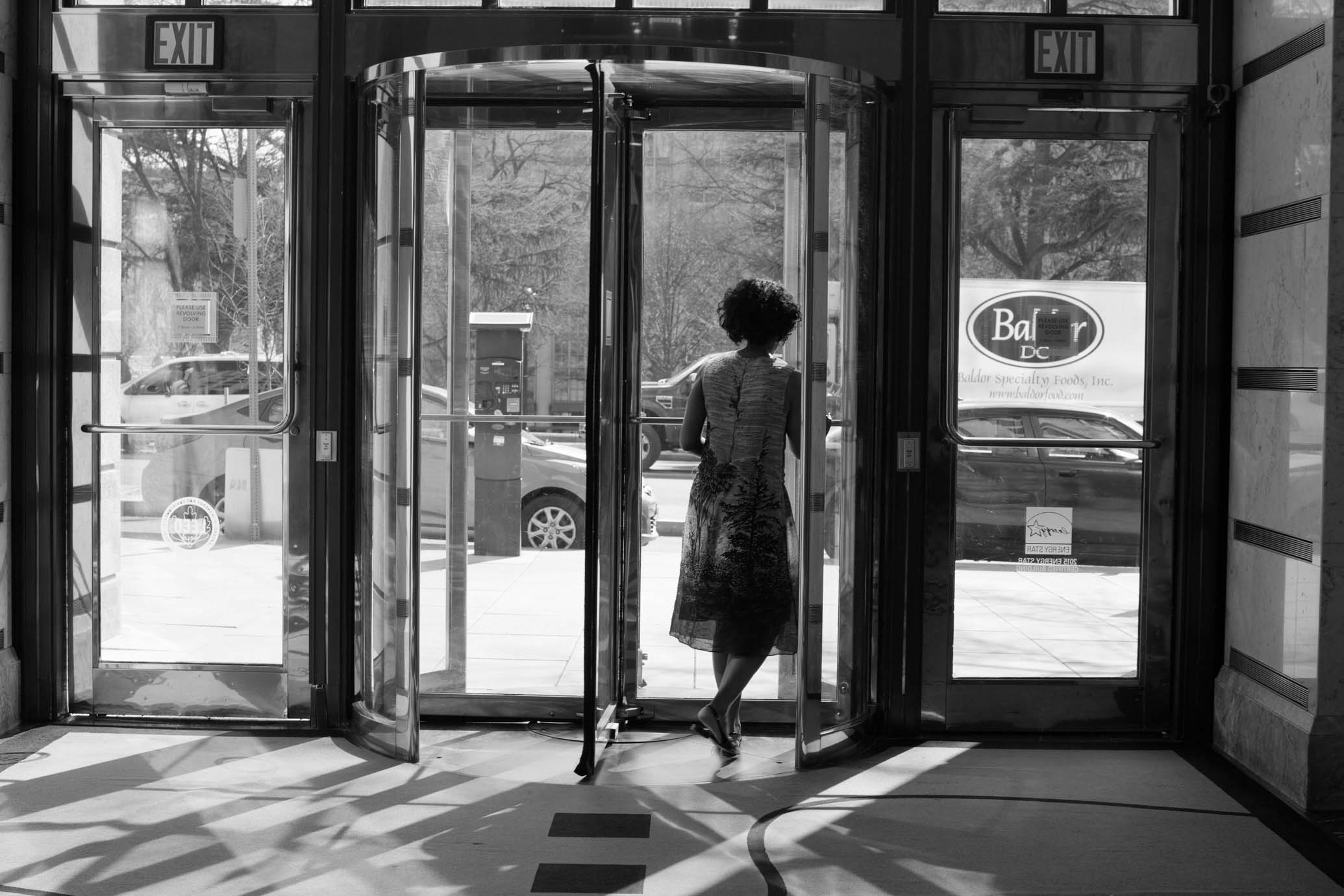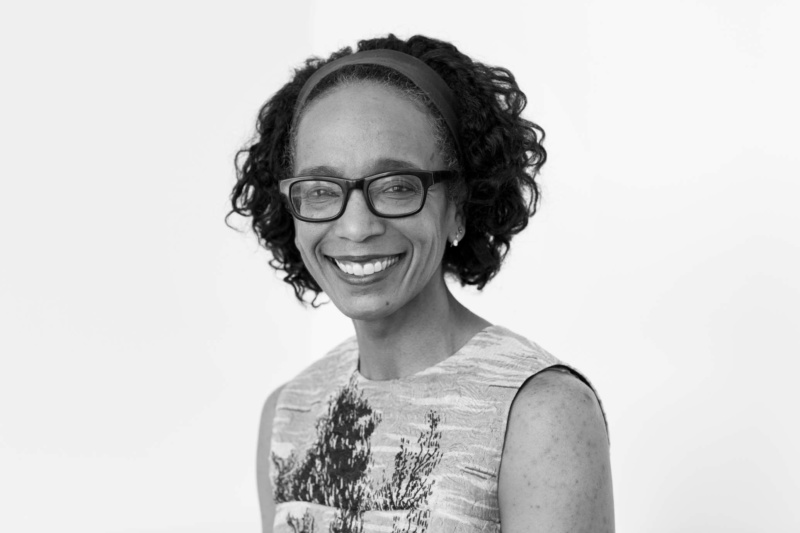
“How did you develop your observational skills?” I’m speaking on the phone with renowned culture writer Robin Givhan, fashion critic for The Washington Post, in late July. I’m so curious about her methods that I don’t realize I’ve presented a question that sounds rather like something a student in Journalism 101 might formulate. She doesn’t miss a beat though, and speculates that her skills were perhaps the natural result of a shy demeanor. After a pause, however, she adds that they were also first cultivated as a pleasure, by means of a wonderful, unusual tradition with her father. “He and I used to have this ritual of going to the mall on Christmas Eve day. It wasn’t to go shopping. We’d come up with a random excuse to go—‘We need more ribbon to wrap presents!’— but actually it was just to sit in the mall, have a cup of coffee and watch the chaos. My father is a great people-watcher.”
No individual can be defined as the product of one single experience, but sometimes there are anecdotes from our past that feel symbolic, synthesizing many strands of our pursuits or personality into a sort of archetypal narrative. In a way, sitting patiently in a crowded place defined by furious consumerism is exactly what comprises her work today: Givhan has been writing about the meaning of appearances, particularly in the political sphere, for over twenty-five years. I could easily picture that young woman sitting, drinking coffee, silently pondering a stranger’s mad gestures, another’s frayed overcoat, a businessman’s untied shoelace. Clothing provides us with the subtitles of whatever story it is we’re being told (whether it’s authored by a politician, celebrity, influencer or your neighbor) and Givhan is an expert reader.
She joined the Post in 1995, where her fashion reporting expanded from seasonal collection reviews to the analysis of cultural events, public figures and social phenomena through the lens of clothing. The Detroit-native did not set out with the specific goal of fashion criticism in mind and an early interest in biology nearly guided her to medical school. After receiving her masters in journalism from the University of Michigan, she joined the Detroit Free Press (deferring law school for two years), where she covered the burgeoning techno music scene. When a colleague who covered menswear reporting resigned, Givhan applied for the position, despite having no formal knowledge about the fashion industry. Sometimes an initial lack of acquaintance with a field can serve you well: in the absence of knowing what you’re supposed to do or think, you fill in the blanks with your own intuition.
Today, Givhan’s name is spoken with a kind of whispered respect, and not just by those who work in the rag trade. By fashion insiders, she is appreciated for her straightforward, unapologetic reviews of shows, and by readers from all other backgrounds, she is a welcoming interpreter of a world that sometimes seems to pride itself on not making sense to anyone outside of its glittering, archaic walls.
She is known particularly for her analyses of political figures based on their attire, which zero in on the small, seemingly mundane details and transform them into layered, complex social commentaries—a feat which earned her a Pulitzer Prize for Criticism in 2005. (She is the only fashion writer to ever receive the award.) Equipped with highly refined tools of observation, Givhan draws conclusions that feel not only preternatural in their critical acuity, but also remarkable for the transparency of their logic.
I ask her why she thinks such clarity of method is important for the critic. “If you are offering up an opinion, the greatest gift that you can give to readers is, as they used to say in math class, to show your work. If people can understand how you came to your assessment, then whether or not they think your assessment is correct, they will at least understand why you got there. They might quibble with some of those steps, but if you don’t show them, then you’re sort of giving people this tyrannical rant, that if they disagree with, all they can really do is rant back at you. You create a situation in which you’ve eliminated all the tools that you need for thoughtful conversation or thoughtful debate, and it gets reduced to emotional yelling.”
You might attribute this modus operandi to the simple fact that Givhan writes for a general interest readership; her readers are not necessarily fashion-savvy individuals who already know the key players and are familiar with the context, and therefore more explanations are, naturally, required. But relegating this journalistic standard to mere populist appeal could even be described as hazardous, because it sanctions the desire to rely on one’s personal opinions and emotions for critical analysis without questioning where they come from.
Showing her work doesn’t weaken her delivery: it strengthens it. Givhan talks about our current president’s proclivity not to hire people, but rather to cast them like actors based on whether they look the part, “as in the stereotypical idea of what that part is,” she explains. “It tells you a lot about how the administration values people, and who the administration values. So much comes through when you start talking about the aesthetics.”
Givhan’s analysis of the fashion choices of political figures brings into sharp focus the similarities in logic between the industries, namely that reality can very easily be warped and manipulated by perception. Politicians and fashion executives alike make use of the fact that the public is often not able to differentiate between fact and appearance, which is something that the Trump administration—as well as most major luxury fashion brands—have exploited to disastrous effect. We buy into brands, for instance, based on what the brand represents to us, not for the quality, beauty or functionality of the physical product. “Appearance doesn’t change fact,” Givhan explained in a 2018 interview, “but it certainly can alter the way in which we perceive the fact; sometimes, it alters whether or not we believe in it.”
In the early 20th century, political critic Walter Lippmann wrote in his book Public Opinion that “for the most part we do not first see, and then define, we define and then see.” By no means should this be passed off as a platitude: most of the time, we really do fail to acknowledge how much of our understanding of the world around us is based on perception and assumption. Many of the very metaphors in our language urge us to avoid what is characterized as superficial judgement, and to see substance and image as completely unrelated. Givhan correctly argues that they are indeed not the same thing, but that their relationship is far more interdependent and complex than we think. It’s worth asking whether the injunction against judging a book by its cover really has more to do with the judge’s prejudices than with the cover itself. The link between analysis of someone’s clothing and a heightened ability to understand something is made plain by Givhan’s writing. “The muscles I’ve built up over the years covering fashion—having to really look at things, very closely—are helpful when I’m looking at and writing about other situations.”

Givhan’s reviews frequently present rich, razor-sharp examinations whose point of origin is clothing and appearance. Her brilliant article about the “Wall of Moms” protest in Portland, published in The Washington Post Magazine in August 2020, featured a probing, personal rumination on the concept, and problematic terminology, of the white ally. “This modest, bland word feels inadequate to the breadth and complexity of what it means. It’s a burdensome yoke that presumes a desire to be identified and acknowledged. To be self-congratulatory when all most people want is to be helpful.”
The tone of Givhan’s writing often strikes me as novelistic: human nature constitutes the nucleus of her stories. The people who populate her articles, as well as their settings, are described in language that is blunt and economical yet intimately detailed (even her headlines read like aphorisms: “Trump’s rally looked like his vision of America: Limited and pitiless”).
Earlier in our interview, I ask about books that made an impact on her as a child. “I had this fantastic English teacher in high school who pulled me aside freshman year and handed me Toni Morrison’s The Bluest Eye. It wasn’t on the reading list for class that semester, but she handed it to me and said, ‘I think you should read this book.’” Similarly to the way in which Givhan’s people-watching ritual seemed like a precursor to her future career, the influence of a book like Morrison’s 1970 debut novel also seemed notably foretelling. One of the main themes of the book is the tremendous (and devastating) power of appearance on our perceptions, especially on how we see ourselves and how we wish to be seen by others.
Her fashion show reporting is no less focused on the human element, and often this vantage point yields deeper insights into a brand’s collection or identity than do standard critiques of the clothes themselves. “I often find that the most telling detail is not on the runway. It’s that little sliver of the backstage that you get a glimpse of if you happen to be seated at the top of the runway, or it’s the look on the audiences’ faces, not in the front row, but the fashion students standing in the back.” Due to the pandemic, critics now base their reviews on live- streamed videos, a development that has shackled Givhan’s roving point of view. “You can only look where the camera is focused, and obviously it’s focused on the action on the runway, the center of the centerpiece. Not being able to take in the entirety of the room is really frustrating.”
When I ask what has kept her interest in fashion fresh after so many years of reporting, I’m fascinated to hear that it has a lot to do with human vulnerability. “It’s an industry that feels like it’s always in the throes of existential angst. Certainly now with all the incredibly consequential issues about its path forward! But it’s always been insecure in many ways.” She points out the irony between the fashion industry’s “sense of insecurity in terms of its place in the world, compared to the fact that [many believe] the industry’s prime objective is to make consumers around the world feel insecure,” enough to buy products that they believe will improve their lives. “It taps into every aspect of human nature. It’s an industry that no one’s really immune to, which gives you the ability to write about a huge range of people. Fashion is an entrée to basically everything.”
In a way, Givhan’s example makes a strong case for the generalist’s approach over that of the specialist. “I’ve always wanted my writing to be accessible to as wide a range of people as possible. Since I write for a general interest publication and not a fashion publication, part of my job is not to put unnecessary barriers to enter into a fashion story. I want those stories to be readily inviting, even to someone who may be incredibly disengaged from fashion, or resentful of it.” This positioning allows her to draw clear and substantiated connections between disparate industries, events and social figures—abstract leaps between cultural phenomena that might not be as readily accepted in more specialized criticism. It’s not that more targeted writing about changing hemlines, celebrity sponsorships and the latest trends is unimportant; for fashion designers, stylists, merchandisers, etc., such technical details are vital for staying afloat. But fashion criticism that weaves bigger issues into its fabric seems to better reflect the changing reality of the industry—and of our world.




